There has been a growing interest recently in converting gas fireplaces to wood-burning stoves, and it’s easy to see why. There’s nothing quite like cozying up around a crackling fire and the warmth and ambiance a wood-burning stove provides.
I recently went through the process of replacing my old gas fireplace with a brand new Ekol Apple Pie stove. I’m absolutely delighted with the results, so I thought I would share some of the process here with you, as well as before and after pictures, so you can decide for yourself whether converting your gas fireplace into a wood-burning stove is right for you.

Switching from a gas fireplace to a wood-burning stove can be a straightforward process, but it also requires careful planning and attention to safety measures. Before diving into the conversion, it’s crucial to examine your existing gas fireplace to ensure it’s compatible with a wood stove installation.
Not all gas fireplaces are suitable for wood-burning conversions, particularly those in newer homes. It’s also important to check local building regulations, have your chimney inspected, and ensure proper ventilation in the room.
Once you’ve determined that your gas fireplace can indeed be converted, it’s time to get started with the actual process of making the switch to Dorset stoves and wood burners. This includes selecting the right wood-burning stove for your needs, budget, and space. From there, you’ll need to properly install the stove, ensuring that all safety and building code requirements are met. No matter your motivation for converting, a well-installed wood-burning stove can provide warmth and charm to your home for years to come.
Preparation for Converting Your Gas Fireplace to a Wood Burning Stove
Inspecting the Hearth
Before embarking on the conversion, you’ll need to inspect the existing fireplace, specifically the hearth. A wood-burning stove often requires a more robust surface to rest on compared to a gas appliance. Check if the hearth is made of a suitable material, such as stone or concrete, that can withstand the weight and heat of a wood-burning stove. You should also make sure the hearth dimensions comply with local building codes to ensure safety and proper function.
Checking the Chimney
The next step in the conversion process is assessing the chimney. Having a well-functioning chimney is crucial for proper ventilation.
For this stage I would highly recommend getting your chimney inspected and checked by a professional. We used Llanelli Chimney Sweeping, who were fantastic. They thoroughly inspected our chimney for damage. They also told us the types of wood burning stove that would fit in the small space left after the gas fireplace was removed.
If the chimney’s liner isn’t suitable for a wood-burning stove, you may need to replace or upgrade it, or use a different type of flue.
Reviewing Ventilation
You will need to check that the room you’re installing the wood burning stove in has adequate ventilation. This is because the stove draws in air through the vents at the bottom to enable the wood to burn. Most modern windows have built-in vents. However, in certain homes you may need to have a vent put in the wall. Again, your chimney expert will be able to tell you what is required.
It’s also worth getting a carbon monoxide detector installed. This will alert you to a build up carbon monoxide in the room.
Steps to Converting a Gas Fire to a Wood-Burning Stove
In this section, I will cover the steps for converting a gas fireplace to a wood-burning stove. I’ll walk you through the removal of the gas fireplace, installation of the wood-burning stove, and necessary safeguarding measures.
Removing the Gas Fireplace
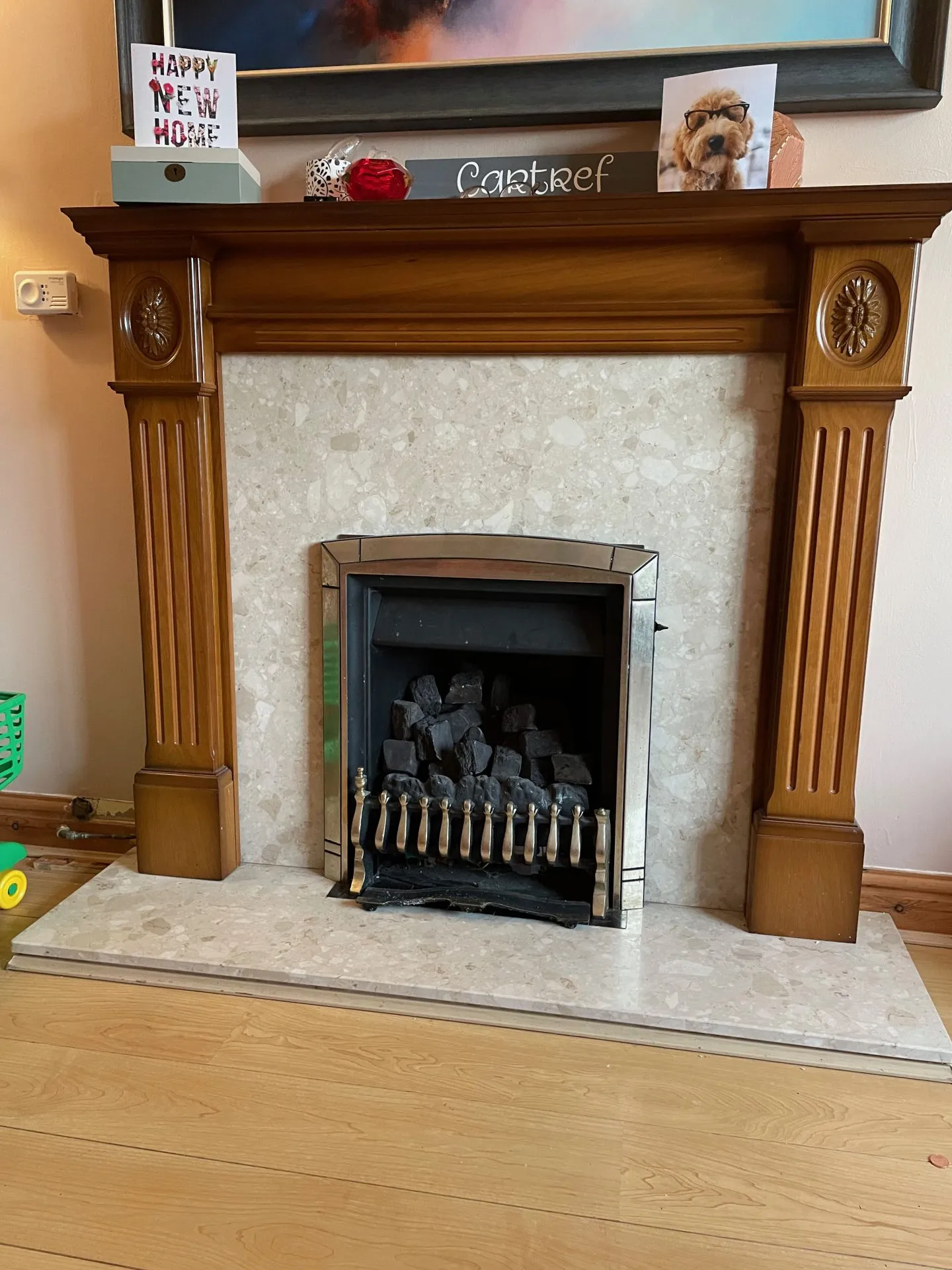
The first step in converting a gas fireplace to a wood-burning stove is to remove the existing gas fireplace. This should be done by a specialist, preferably a Gas Safe Register engineer, to ensure a safe and secure process.
The gas will need to be disconnected and the gas pipe capped off at a suitable distance from where the new wood-burning stove will be installed.
Be sure to inspect the bricks and mortar of the chimney for any damage before proceeding to the next step.
Installing the Wood Burning Stove
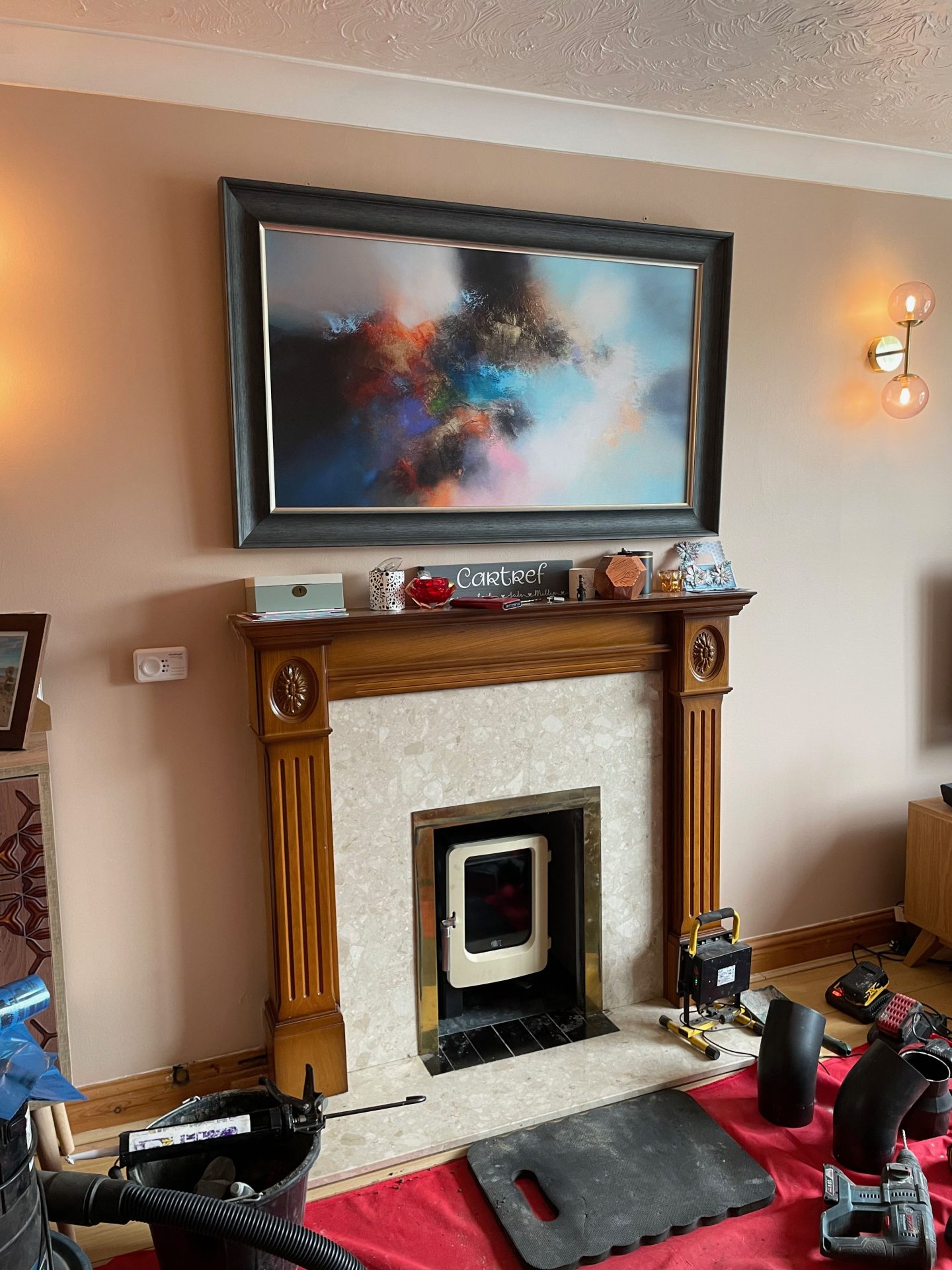
After the gas fireplace has been safely removed, the next step is to install the wood-burning stove. Select a stove that fits your fireplace opening and complies with your local building regulations. We chose the Ekol Apple Pie.
I recommend hiring a professional for this too, to ensure proper installation and compliance with building codes. We used Llanelli Chimney Sweeps, the same company that checked out chimney for us in the first place.
During the installation process, your installer may need to alter the flue to ensure it is compatible with the stove. It is essential to ensure proper ventilation and to maintain the required distance to combustibles to prevent any fire hazards.
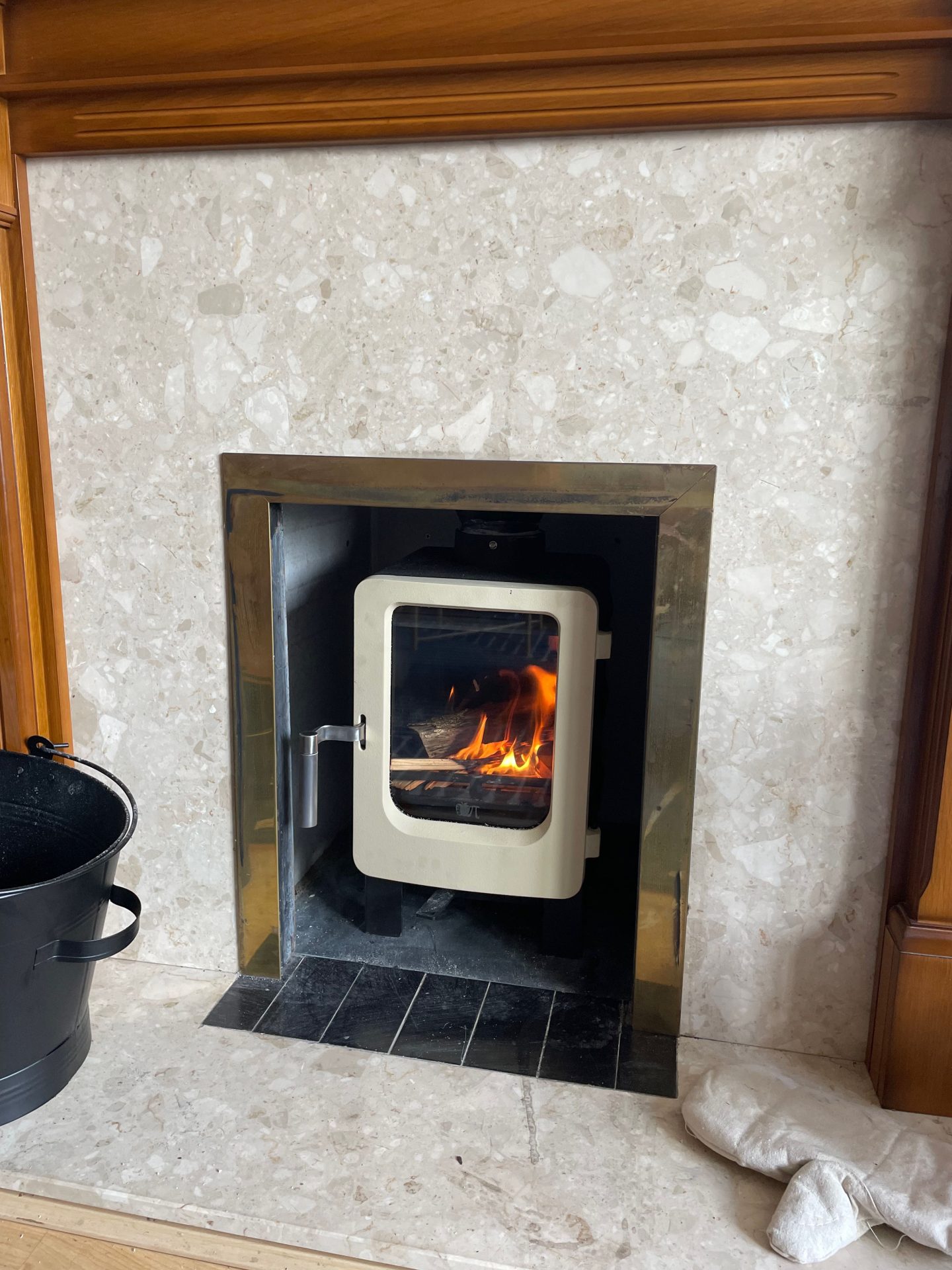
Safeguarding Measures
Once the wood-burning stove has been installed, it’s important to take some safety measures to protect your home and ensure a safe wood-burning experience. Inspect your chimney and flue regularly for any blockages or build-up of creosote. Have your chimney professionally checked every year to ensure proper airflow and reduce the risk of chimney fires.
It’s also inportant to use appropriate fuel for your wood-burning stove, such as well-seasoned logs with low moisture content.
Also, consider the use of a carbon monoxide detector in the room to monitor any potential leaks from your stove and flue system. Follow your stove manufacturer’s guidelines for maintenance and cleaning to help prolong the life of your stove and ensure a safe operation.
Maintaining a Wood-Burning Stove
Taking care of a wood-burning stove is essential for its longevity and efficiency. To ensure my stove operates safely and effectively, I make it a point to regularly maintain it. Here are some steps I follow to keep my wood-burning stove in top shape.
First, I check the stove for any signs of wear and tear. This includes inspecting the stove’s door gasket, as a leaking door could cause smoke to enter my living space. I also examine the glass door for any damage and clean it regularly to maintain good visibility and prevent buildup.
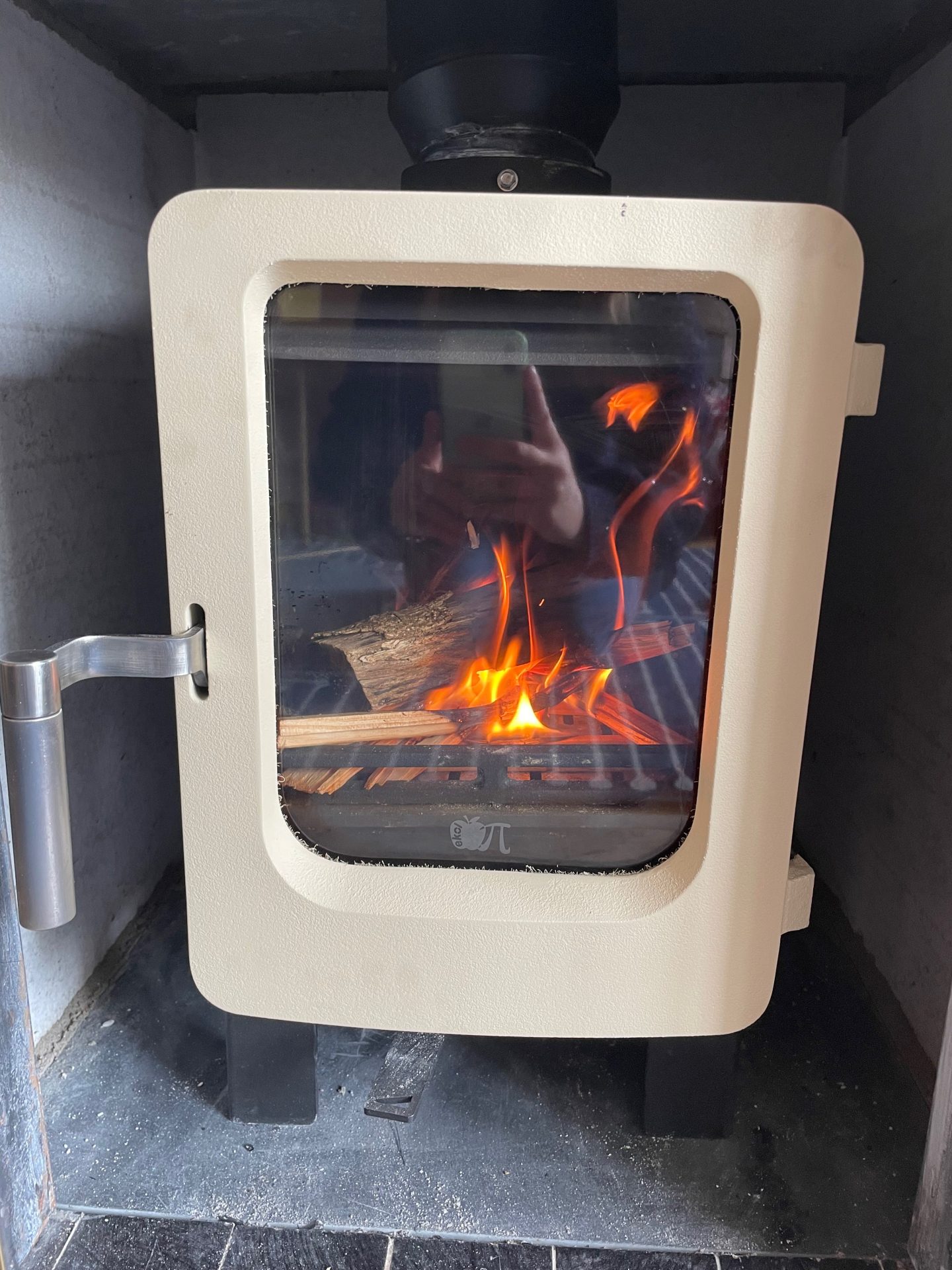
I use a fireplace shovel to scoop out the ashes and a hand broom and dustpan to clean up any remaining debris. It’s important to let the ashes cool completely before disposing of them to avoid any accidents. I ensure that my workspace is well-ventilated, and I usually wear a dust mask to protect myself while cleaning.
I also make sure to use properly seasoned, dry wood for my stove. Burning damp or unseasoned wood can create excessive smoke and creosote, which can lead to potential fires and decreased efficiency of the wood-burning stove. Seasoned wood provides the best heat output, ensuring that my stove stays efficient and safe.
I have also recently been trying night briquettes, which have been great! They are small enough to fit in my little apple pie stove, and they give off a really good amount of heat.
By following these maintenance steps, I can be confident that my wood-burning stove will stay in good working order, allowing me to enjoy the warmth and energy savings it provides throughout the cold months. Regular maintenance not only helps prolong the life of my stove but also helps me feel safe and secure in the knowledge that I’m using it responsibly.
The Final Result
So… Here’s the final result! What do you think?
I decided to paint the fireplace black to look more modern, and I think it looks fab with the ivory colour on the front of the stove!
I used Frenchic Paint to paint it, which was super easy and didn’t require any prepping or priming (my kind of paint!!)
You can read my full Frenchic Paint review to see how I did it.
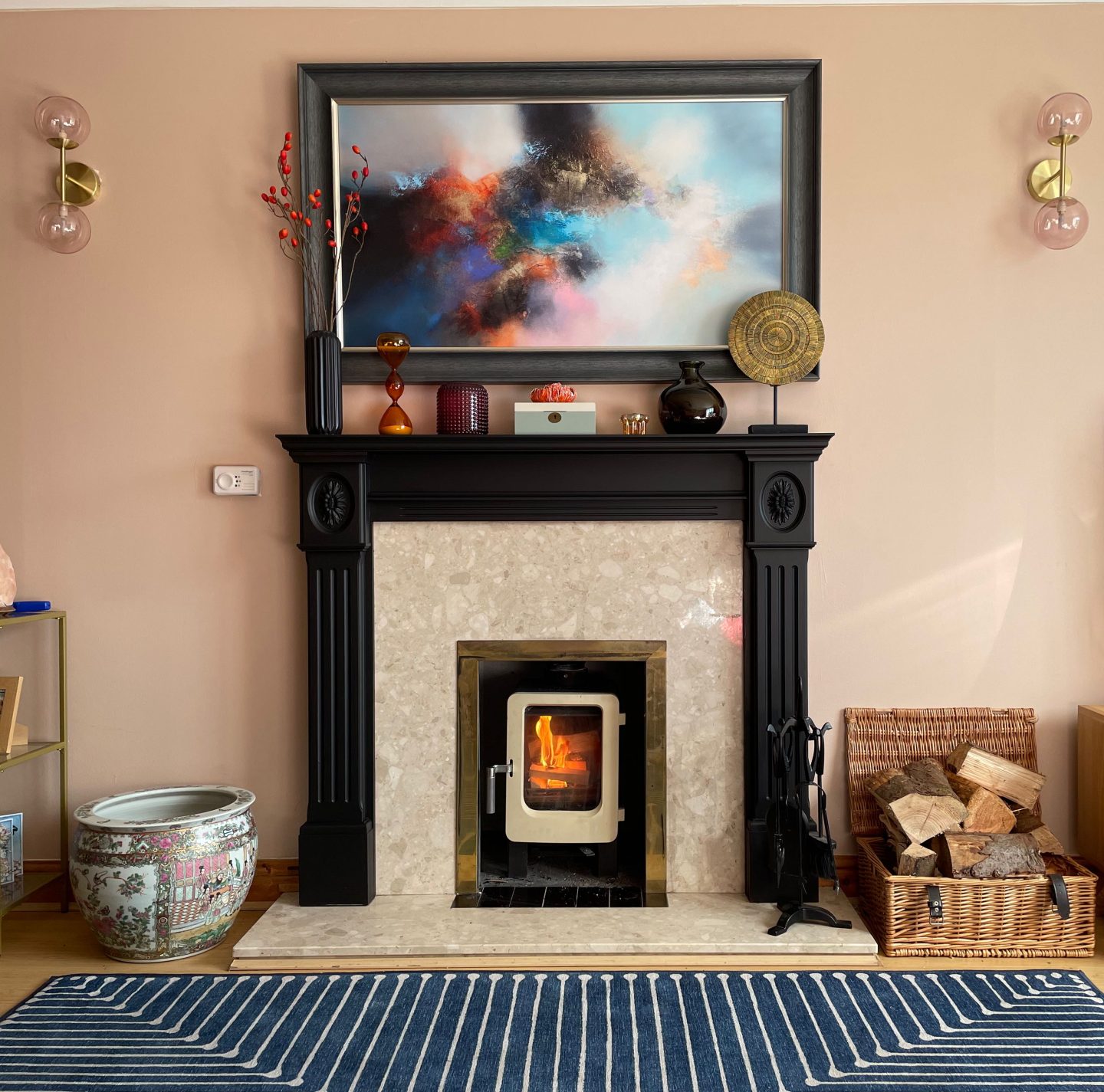
Frequently Asked Questions
What is the process of converting a gas fireplace to a wood-burning stove?
Converting a gas fireplace to a wood-burning stove involves a few essential steps. Firstly, you need to remove the gas fireplace and its components, along with the gas lines. Then, you need to ensure that the chimney or flue system is suitable for a wood-burning stove, which might require a professional inspection. If all is compatible, you can proceed to install the new wood-burning stove and connect it to the existing chimney or flue system. Always work with a professional installer.
How much does it cost to make the switch from gas to wood burning?
The cost of switching from a gas fireplace to a wood-burning stove can vary depending on factors such as the type and model of the stove, labor costs, and necessary modifications to the chimney or flue. In my case it cost about £2000 total for the new stove and the installation. Please note that additional costs may arise if modifications are needed for the chimney or flue system.
Do I need a chimney for installing a wood-burning stove?
While it is ideal to have a chimney for installing a wood-burning stove, it isn’t always necessary. Modern wood-burning stoves can be fitted with a twin-wall flue system that runs either through the wall or roof, allowing you to install a stove in rooms without a traditional chimney.
Are there alternatives to consider, such as electric fireplaces?
Yes, there are alternatives to wood-burning stoves, such as electric fireplaces. Electric fireplaces require no venting, are easy to install, and provide the look and feel of a real fire without the need for a flue or chimney. They are more cost-effective and environmentally friendly than wood stoves. However, they don’t offer the same authenticity and ambiance as a wood-burning stove, and their heat output might not meet the requirements of those seeking substantial warmth during the colder months.






Leave a Reply